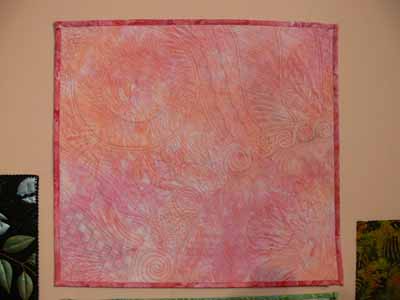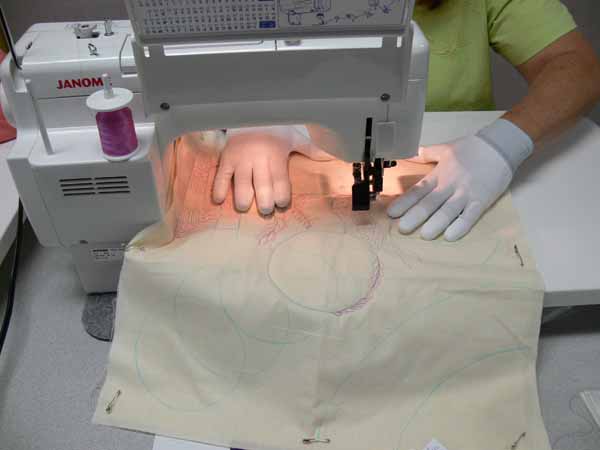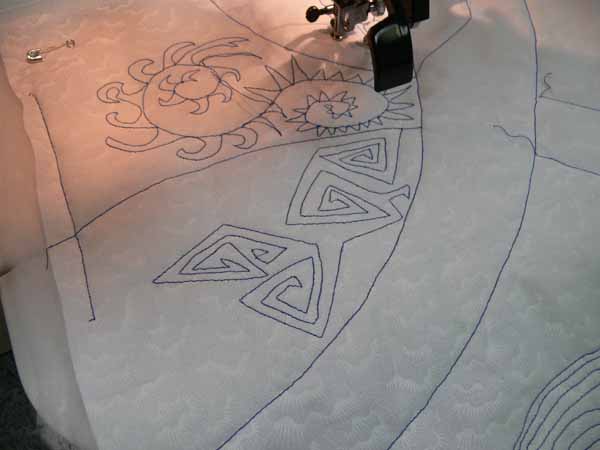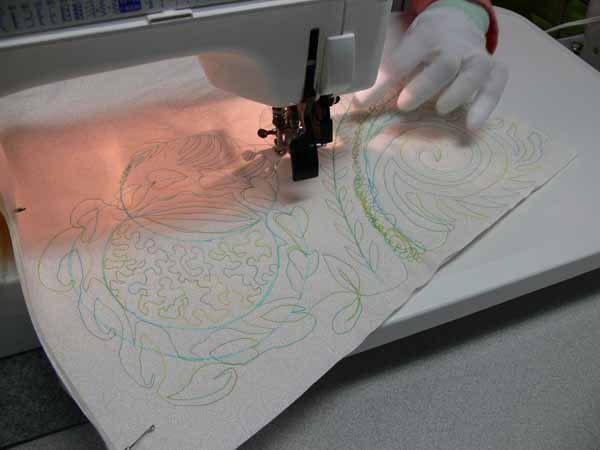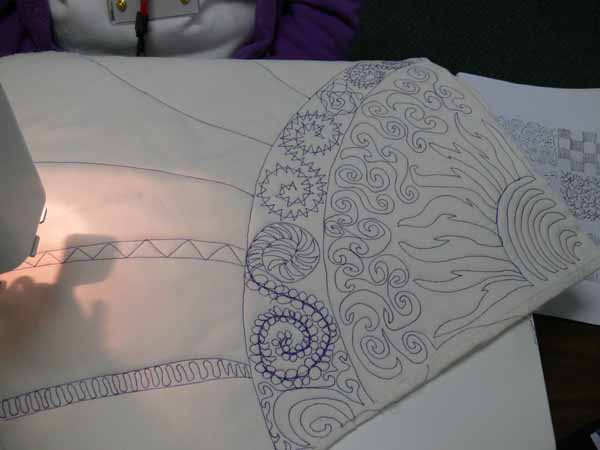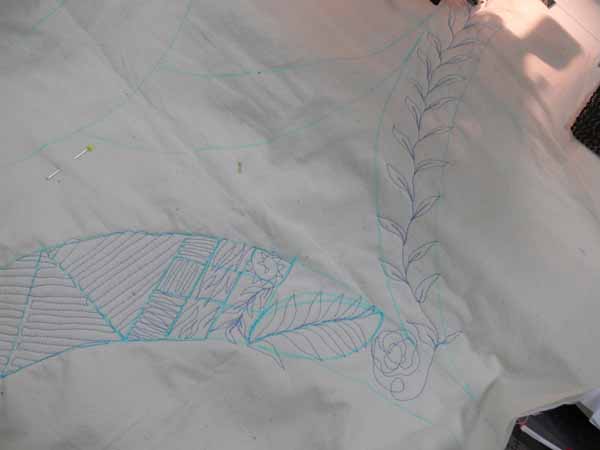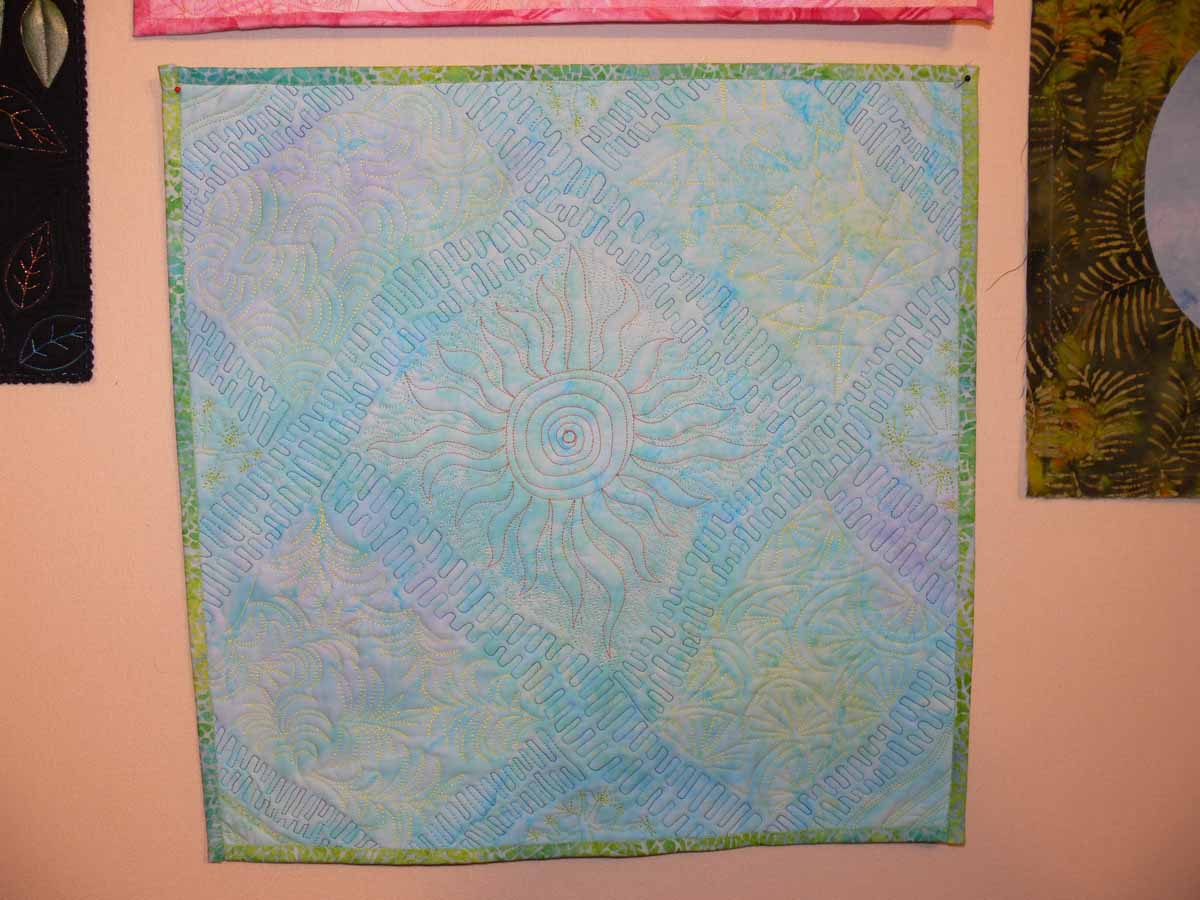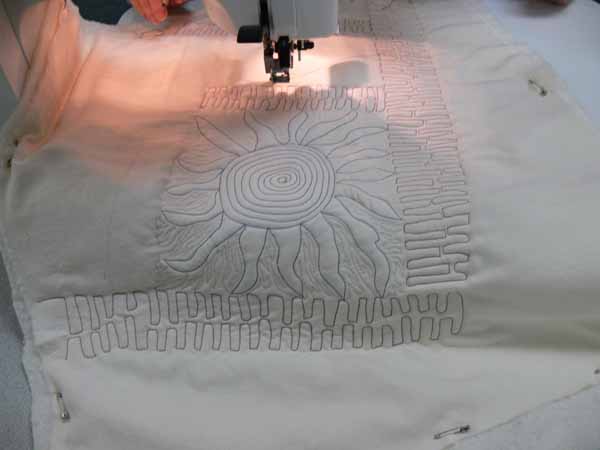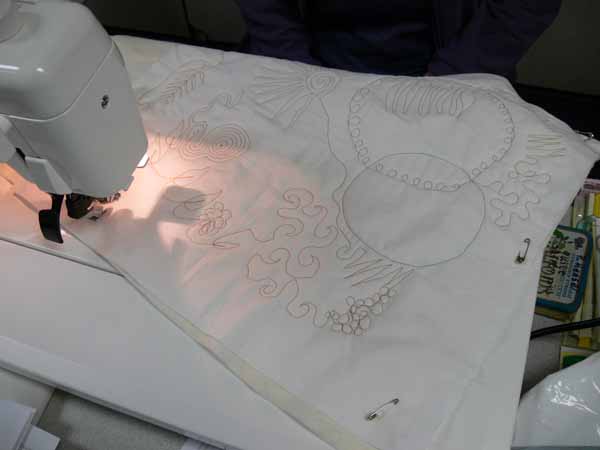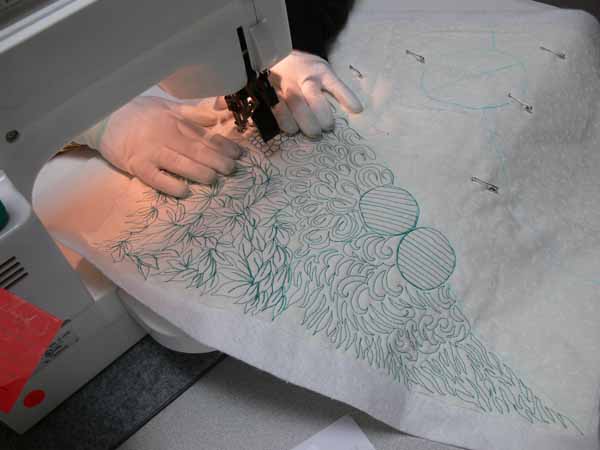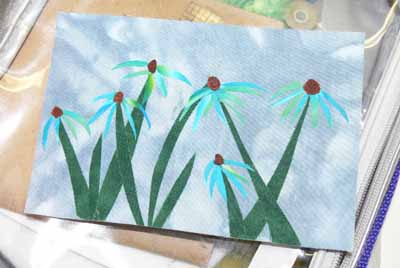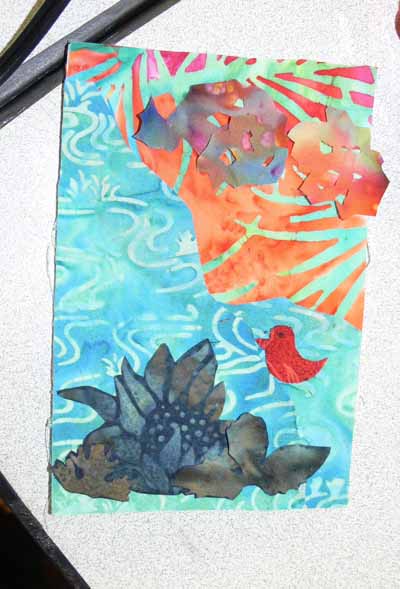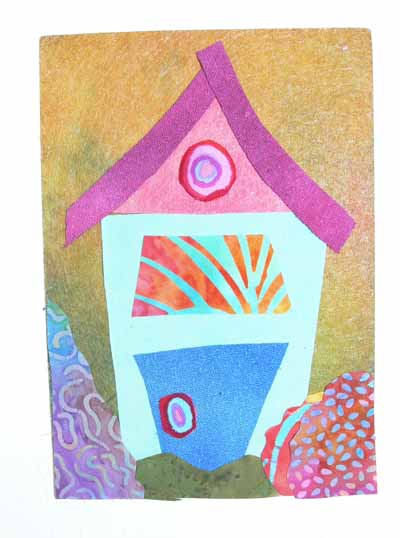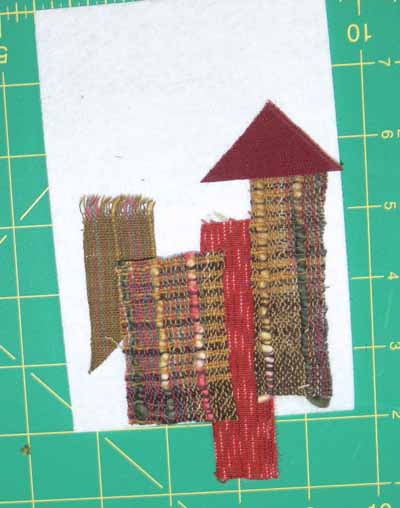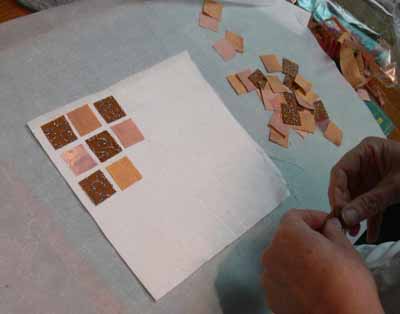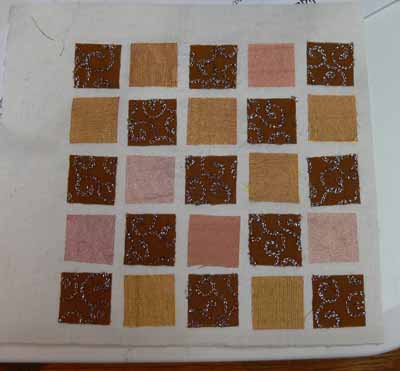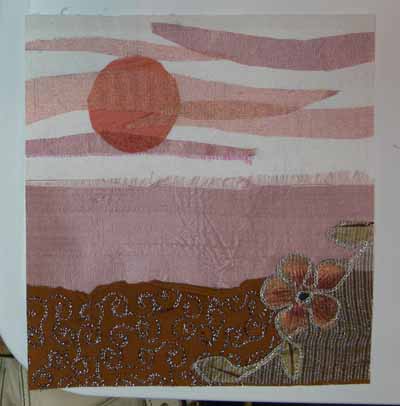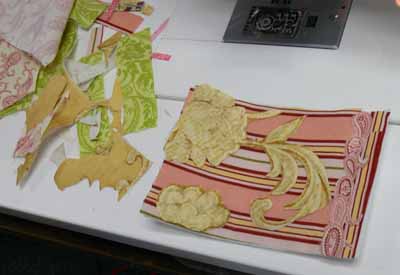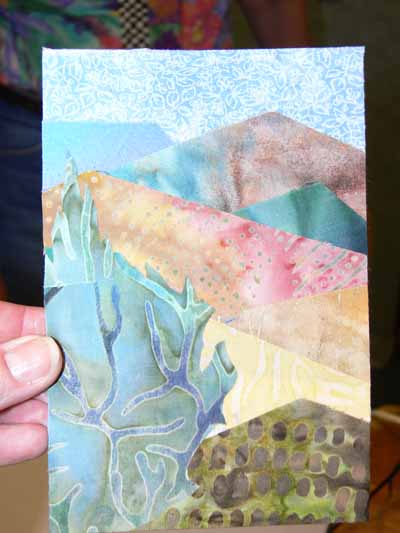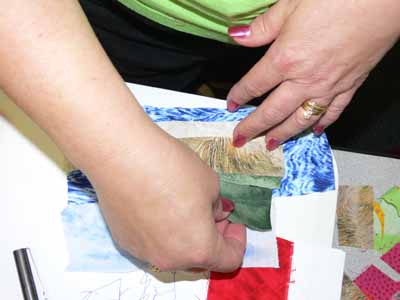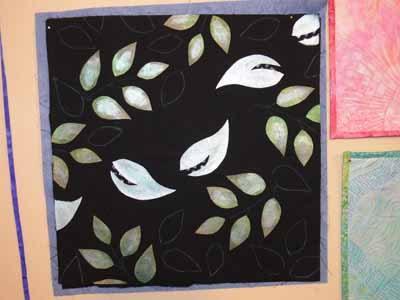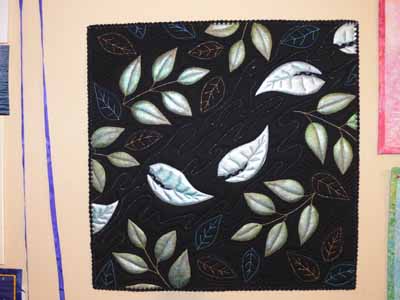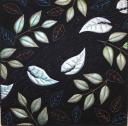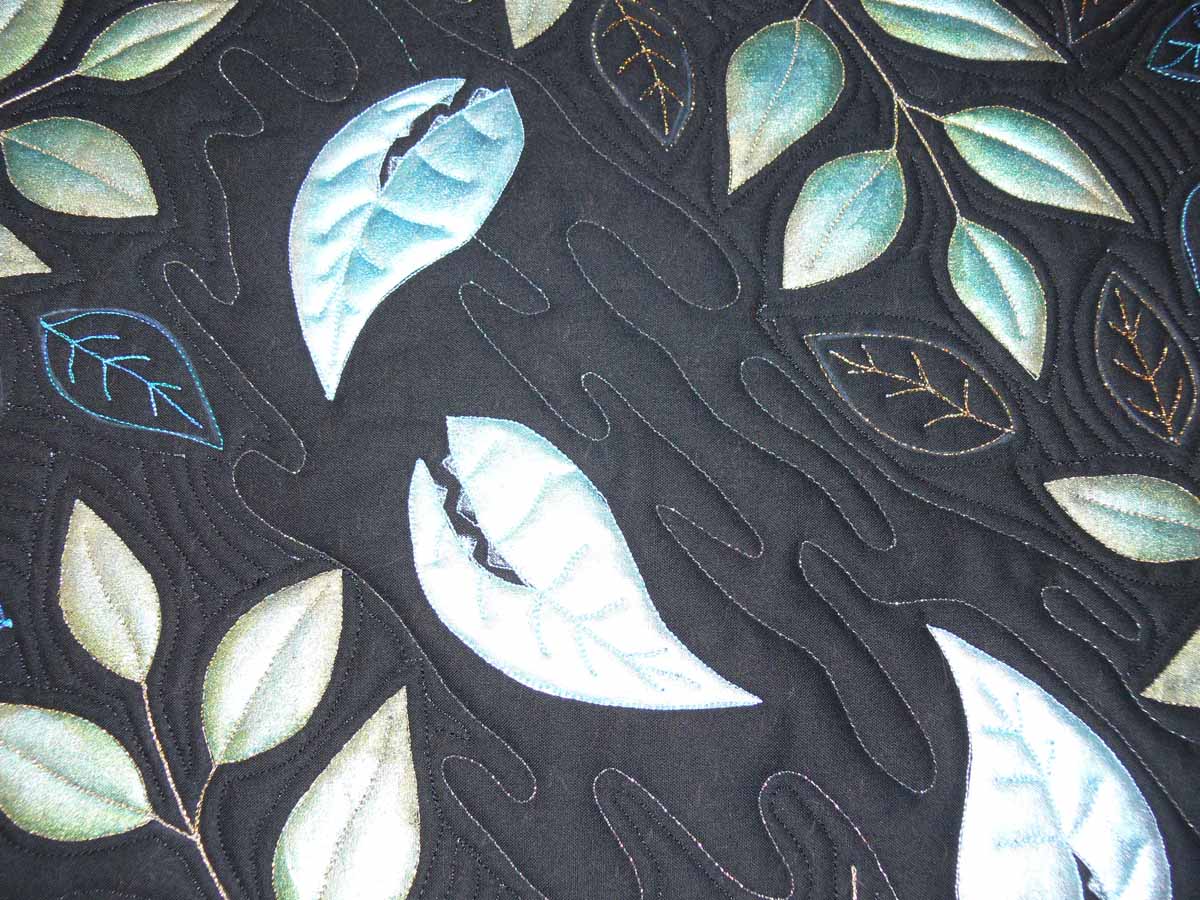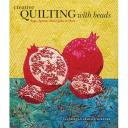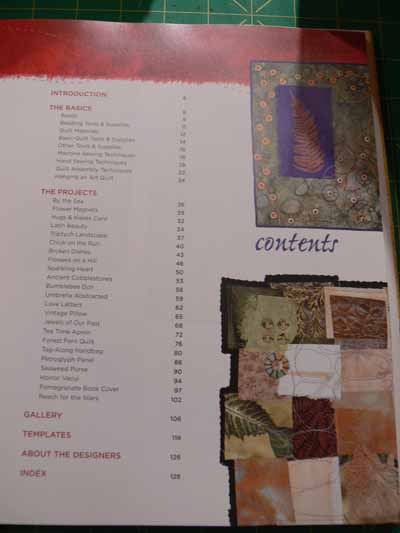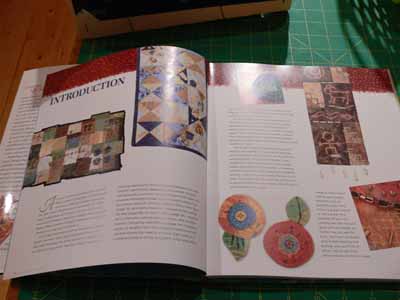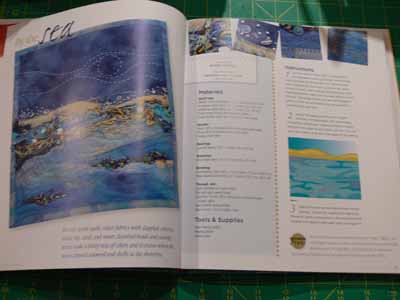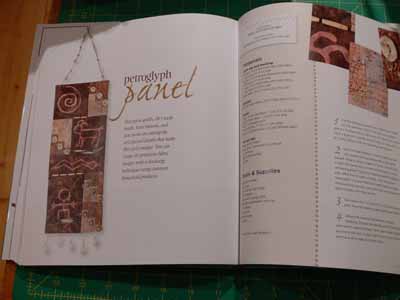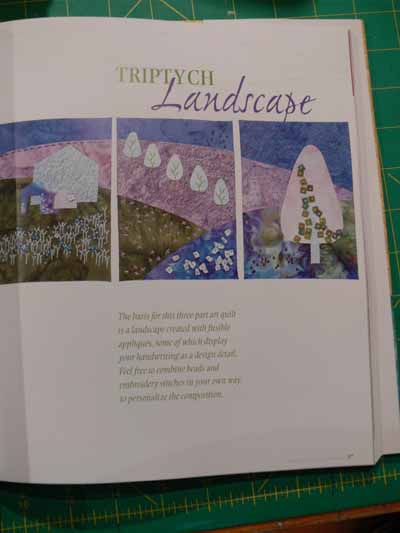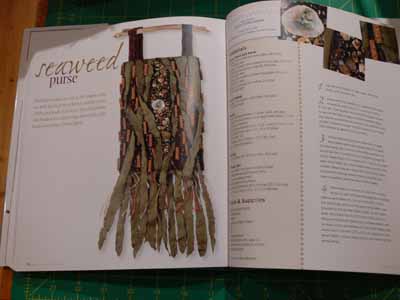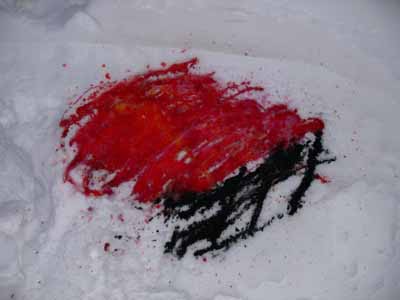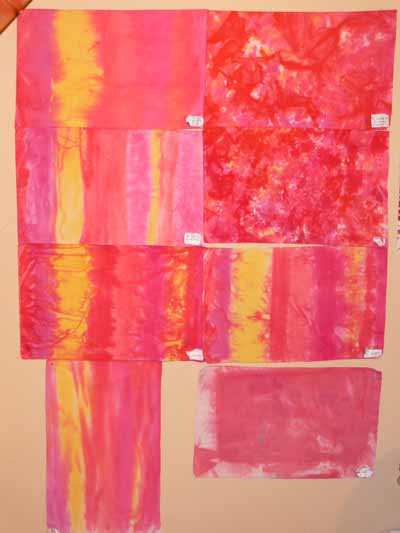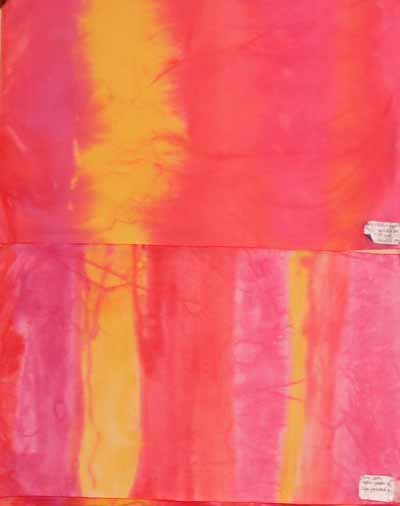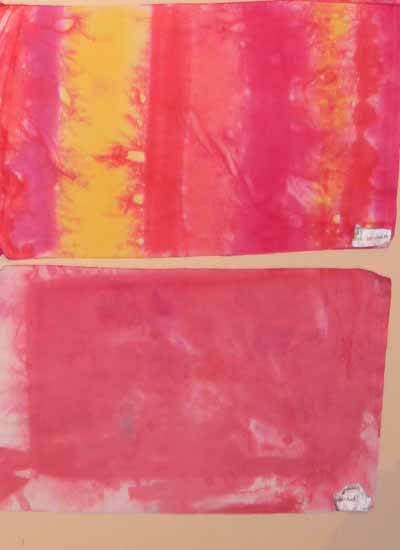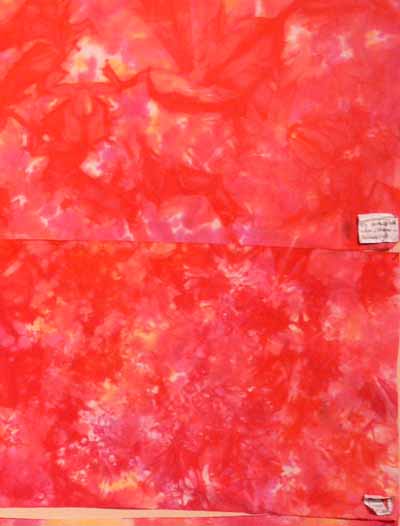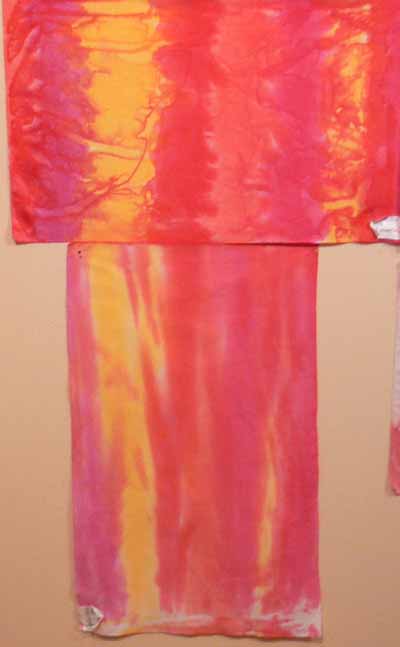Paducah 3 — Nearly No Mark Machine Quilting
Monday, May 12th, 2008My last quilting class in Paducah, and one of the most fun, was Nearly No Mark machine quilting. Marking a quilt top is up there in the (NOT) fun category with basting! But playing and doodling with your needle and thread IS fun! These designs are ones I use in art quilts all the time, but they can just as easily be used in contemporary and even some traditional quilts. I have come up with what I call my vocabulary of quilting stitches.
These are stitched out as fill patterns, but they could easily be enlarged and used for all-over quilting patterns for a lap quilt or snuggly. I shared my teacher samples a while back, but the pink sampler above is the one I like best so I’ll share it again!
Click on the thumbnail for a larger view (or right click on a PC, and on a mack apple-key + click, to open in another tab/window) with more details of the quilting.
Now lookit what my great students did, and how they translated my patterns into their own thing! This first photo is awesome because she has her hands in what I call the safe position… where you are unlikely to sew through your fingers (it hurts… I’ve done it and do NOT recommend it!) (PS–the following photos can all be viewed larger–click on the photo to resize and/or open in a new tab/window). This hand position also has the virtue of making a small, smooth “hooped” area for your quilting…cool!
I showed the students how to use your arm as an extended compass to make large arcs using your elbow as a pivot point. Many followed my example and made circles (using my high tech templates—yogurt and take-out lids) and arcs, then filled in the resulting spaces with the nearly-no-mark designs; in this one, I really like her variations on the spirals:
I want to find this thread… it is YLI and is heavier (cotton) than I usually use, but the colors are GLORIOUS and so “me!” The quilter lives in Florida, so I think the water colors are inspired by her home….
I think this student is comfortable and happy playing with free-motion, don’t you? (You can see a smidgen of my handout on the far right)
And another arc… I like the vine inside the arc and also switching up the fill on the mini-checkerboard:
One student took my “Southern California themed” piece:
and reworked it… I like her version better! Her thread contrast is way better than mine (I think I’m going to re-do the blue one… it needs it….)
I love that spiky sun that is just at the edge of the sewing table, and also how she used the loops to outline the circle:
And can you tell she loves to quilt… this lady must love playing with the quilting as much as I do! And poor thing…she was short, and tables were SO high… I have no idea how she managed to quilt so well in those circumstances… I love the merging of one pattern into the next:
I think one of the things I enjoyed most was watching the students take my designs and turn them into their own, modifying, improving, changing up, experimenting… WAY cool!

